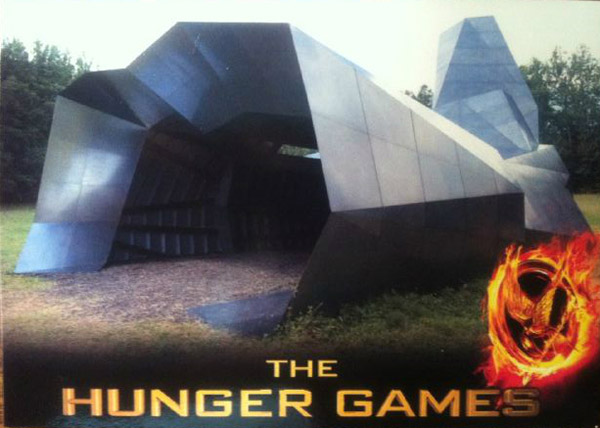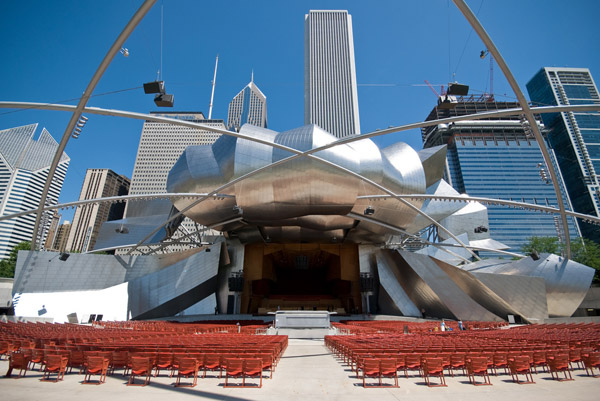Contemporary architecture has a way of being dragooned into filmmakers' visions of our bleak future. Fritz Lang turned the pretty pre-Depression Art Deco skyscrapers of New York City into the backdrop for Metropolis; Jacques Tati reacted to Ludwig Mies van der Rohe the way a lot of us I do for Playtime; Ridley Scott combined Edward Hopper's noirish Nighthawks with the quickly-expanding skyline of Hong Kong for Blade Runner; Terry Gilliam's Brazil placed the grimly amusing apartment scenes in Ricardo Bofill's postmodern French apartment complex Les Espaces d'Abraxas; and so forth. Fair or not, directors take the best vision of the future that our architectural minds can give us and try to find the dark lining in the silver buildings.
So I can't be the only person who saw The Hunger Games* and thought the Cornucopia (minor spoiler) was just ersatz Frank Gehry.


I'll never be able to see the Grant Park Orchestra again without visions of being chased by an axe-wielding tween as I dash for a pile of blankets, wine carriers, picnic sets, and Fox & Obel charcuterie. ("It's going to be a bloodbath. That's not your game.")
Or maybe it is our bleak future:

* My wife complains that The Hunger Games (she read it; I waited for the movie, since I was afraid it was about space) is just a ripoff of Chris Onstad's brilliant post-apocalyptic Achewood storyline "The Great Outdoor Fight." But as a big fan of Dorothea Lange, Matewan and the movie Starship Troopers, it was right up my alley.
On the other hand, if you want to see Jennifer Lawrence playing a country girl forced to grow up quickly in order to protect her younger sibling and mentally-destroyed mother, wander the woods, escape death, eat small game, and confront a much more realistic depiction of America's bleak future, Winter's Bone is actually even more gripping and badass.
Photograph: –Filippo– (CC by 2.0)


